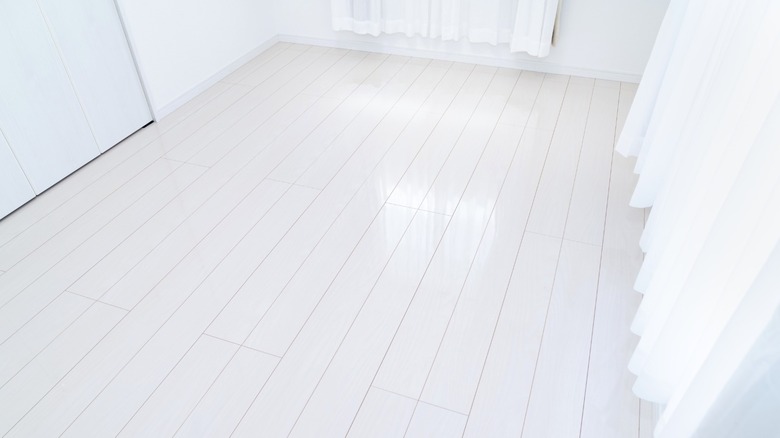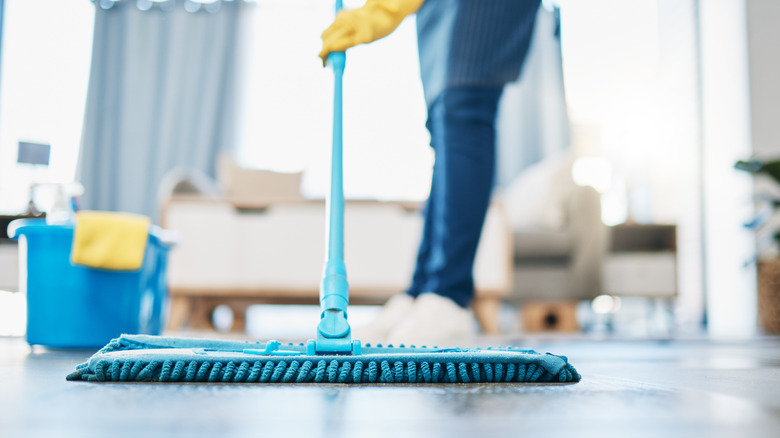The One Way You Should Avoid Cleaning Your Painted Floors At All Costs
Paint is shaping up to be the flooring trend that you'll start seeing everywhere in 2026, and that may include your own home. But you're probably wondering how to clean them. Steam cleaning might seem like a convenient, chemical-free way to deep-clean the house, but you might want to think twice before using it on a painted floor. As it turns out, painted floors are one of the main areas to avoid when steam cleaning your home, as the combination of high heat and moisture can cause the paint to lift, bubble, or flake away from the surface beneath. It's particularly bad on a water-based paint, which is the most common variety of floor paint. Even floors finished with a durable topcoat aren't fully safe because steam could sneak under layers and soften the paint's bond to the wood.
Steam cleaners generally release steam at temperatures of up to 300 degrees Fahrenheit. Paint and varnish simply aren't made to withstand that kind of temperature or humidity. When exposed to it, the pigments and resins begin to break down, dulling the color and weakening the adhesion that keeps your floor looking smooth and seamless. This can lead to discoloration, uneven texture, or warping.
Beyond aesthetics, there's the cost of repairs to consider. Once paint begins to separate, you can't just touch up the damage. It often requires full sanding and repainting to restore an even finish. That's why knowing what to avoid is just as important as knowing how to clean. Steam cleaning might promise spotless results, but on painted surfaces, it's a shortcut to otherwise avoidable floor damage.
How to safely clean your painted floor
The best way to maintain painted floors is to treat them gently and keep water use to a minimum, meaning you should skip the steam cleaners and soaking wet mops. Start by sweeping or vacuuming with a soft-bristle attachment to remove dust and grit that can scratch the paint. For weekly or as-needed cleaning, use a mild pH-neutral floor cleaner or mix a gallon of warm water with a few teaspoons of mild dishwashing liquid to refresh your floor. Only use a slightly damp mop, and make sure to do a test spot before committing to the entire floor.
Work in sections, using smooth passes and drying each area as you go with a clean towel. For sticky spots or marks, dip a soft cloth in your soapy mix and spot-clean. Skip any vinegar, ammonia, or overly abrasive cleaners because those might strip away or fade the paint. You could potentially tackle tough marks with a Magic Eraser, much as you would to clean scuffed flat painted walls. Always spot test this in a hidden area, though, and avoid anything more than light use, as it can potentially damage the paint and floor. However you decide to clean them, the key takeaway is to avoid extreme heat and moisture to help keep your painted floors bright, smooth, and durable.

